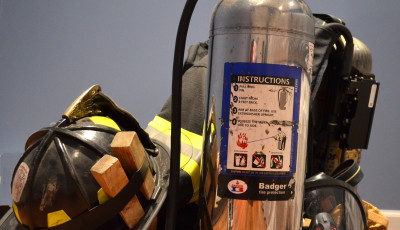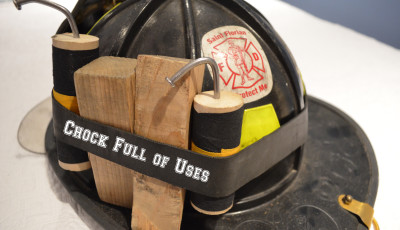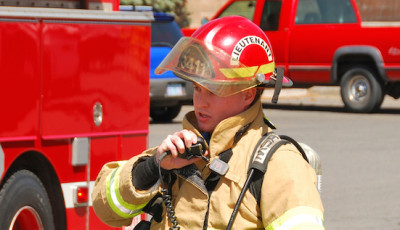Sprinklers and Standpipes: Executing The Fundamentals – Part 4
In Parts 1 and 2 we have explained the importance of understanding these systems and have discussed Class I and II systems. Let’s explore the Class III system and begin applying what we have learned from a tactical perspective.
A Class III system is a combination system of a standpipe and a sprinkler system. In this type of system you may see two types. You may see a sprinkled building with standpipe connections located in the stairwells, in areas of refuge, and on rooftops.
You may also see a non-sprinkled building with a standpipe system located in stairwells, areas of refuge, and hose cabinets with a 2 ½ hose connection. If the building is equipped with second option, it would be advantageous for your crew to inspect these hose cabinets to insure that you will be able to make the proper connections without the use of adapters.
For the purposes of this discussion an area of refuge is any area where firefighters or building occupants can retreat behind passive fire protection systems (fire doors, pressurized stairwells, etc.). These “Passive Fire Protection Systems” allow firefighters a safe area to stage, make your connections, all prior to advancing in to perform suppression or rescue efforts. Passive Fire Protection systems are designed to compartmentalized the building and limit the spread of smoke or fire which allow the occupants areas to retreat to safety as well.
Sizing up the building
Upon your arrival there are several items you should be looking for.
The building height if 30’ or higher should indicate the presence of a minimum of a standpipe system. Any building with an occupancy load of 1000 persons should be sprinkled and have a standpipe system. This isn’t always the case depending on your jurisdiction’s code enforcement and if the building was grandfathered in due to its age.
FDC: Where are they and which system are you supplying?
FDC’s may be for the sprinkler system, standpipe system, or both. They should be properly labeled. The number of connections on an FDC is based upon a calculated flow of 250 GPM per connection. For example, if you see an FDC with two connections you can rapidly determine the max flow for this building is 500GPM. These connections can be on the side of the building or remotely located away from the building.
Signs of Something More
Water gongs activated and a test header affixed to the building.
As you arrive you hear a bell ringing. As you look at the building you may see a red circular vented disc mounted on the side of the building. This is known as a water gong. It is designed to ring to alarm those in the area when the sprinkler system is flowing.
A building that has a test header mounted or affixed to it is an indication of a fire pump. Every fire pump is required to be tested and the test header allows for the flowing of large amounts of water. Each discharge is indicative of a flow of 250 GPM. By counting the number of discharges you can quickly determine the fire pumps maximum GPM.
Fire pumps can be either electric, diesel, or steam powered. The fire pump activates when the pressure in the sprinkler or standpipe system drops below a set threshold PSI. Pressure fluctuations in the water system of a failure of the jockey pump to maintain air pressure can cause the fire pump to activate without sprinkler head activation or a drop in pressure due to a standpipe connection being opened.
As you size up the fire pump it’s important to note:
Is the pump running?
What is the operating pressure so you can properly supplement it through the FDC?
How is the pump powered? Is it an electric pump and your arriving at a fire during a power outage?
Next Time
In the next article we will discuss three tactical perspectives in reference to sprinklers and standpipes. We will expound upon the role of the company officer, the engineer (driver), and the firefighter.
Until then, start practicing sizing up buildings in your response area. Challenge yourself to see how quickly you can determine if it is equipped with the fire protections systems we have discussed. This will help you in whatever role you fill in the fire service.
Feature Picture Courtesy: Epoch TImes
Cover Picture Courtesy: Want China Times
Both images show a Shanghi China high rise fire that killed 58 people injured dozens of others and destroyed the 28 story building.
Read the complete series here!











Pingback: Sprinklers and Standpipes: Executing the Fundamentals Part 2 | FireFighterToolBox
Pingback: Sprinklers and Standpipes – Executing the Fundamentals: Part 3 | FireFighterToolBox
Pingback: Sprinkler and Standpipes – Executing the Fundamentals – Part 1 | FireFighterToolBox